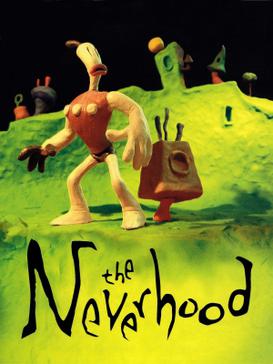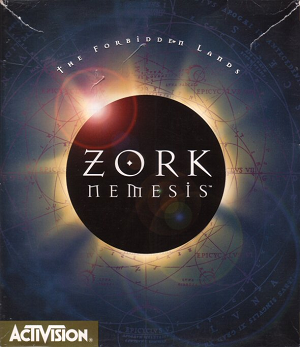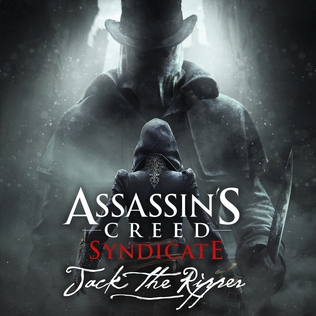
Cyberspace is an interconnected digital environment. It is a type of virtual world popularized with the rise of the Internet. The term entered popular culture from science fiction and the arts but is now used by technology strategists, security professionals, governments, military and industry leaders and entrepreneurs to describe the domain of the global technology environment, commonly defined as standing for the global network of interdependent information technology infrastructures, telecommunications networks and computer processing systems. Others consider cyberspace to be just a notional environment in which communication over computer networks occurs. The word became popular in the 1990s when the use of the Internet, networking, and digital communication were all growing dramatically; the term cyberspace was able to represent the many new ideas and phenomena that were emerging. As a social experience, individuals can interact, exchange ideas, share information, provide social support, conduct business, direct actions, create artistic media, play games, engage in political discussion, and so on, using this global network. Cyberspace users are sometimes referred to as cybernauts.
A snuff film, snuff movie or snuff video is a type of film, often explicit, that shows, or purports to show, scenes of actual homicide.

The Neverhood is a 1996 point-and-click adventure video game developed by The Neverhood, Inc. and published by DreamWorks Interactive for Microsoft Windows. The game follows the adventure of a claymation character named Klaymen as he discovers his origins and his purpose in a world made entirely out of clay. When the game was originally released, it was unique in that all of its animation was done entirely in claymation, including all of the sets. The gameplay consists mostly of guiding the main character Klaymen around and solving puzzles to advance. Video sequences help advance the plot. In addition to being unique, The Neverhood aimed at being quirky and humorous, as is evident by the characters, the music, and the plot sequence. It received a sequel in 1998, Skullmonkeys, which was a platform game, abandoning the adventure format of the original.

Peter William Sutcliffe, also known as Peter Coonan, was an English serial killer who was convicted of murdering thirteen women and attempting to murder seven others between 1975 and 1980. He was dubbed in press reports as the Yorkshire Ripper, an allusion to the Victorian serial killer Jack the Ripper. He was sentenced to twenty concurrent sentences of life imprisonment, which were converted to a whole life order in 2010. Two of Sutcliffe's murders took place in Manchester; all the others were in West Yorkshire. Criminal psychologist David Holmes characterised Sutcliffe as being an "extremely callous, sexually sadistic serial killer."
Intrusion Countermeasures Electronics (ICE) is a term used in cyberpunk literature to refer to security programs which protect computerized data from being accessed by hackers.

Titanic: Adventure Out of Time is a 1996 point-and-click adventure game developed by CyberFlix and published in the United States and United Kingdom by GTE Entertainment and Europress respectively, for Windows and Macintosh. It takes place in a virtual representation of the RMS Titanic, with the player assuming the role of a British spy who has been sent back in time to the final night of the Titanic and must complete a previously failed mission to prevent World War I, the Russian Revolution, and World War II from occurring. The gameplay involves exploring the ship and solving puzzles. There are multiple outcomes and endings to the game depending on the player's interactions with characters and use of items.

Zork Nemesis: The Forbidden Lands is a graphic adventure game developed by Zombie LLC, published by Activision, and released in 1996 for Windows 95, MS-DOS, and Macintosh. It is the eleventh game in the Zork series, and the first title not to be marketed under the Infocom label, while featuring a darker, less comical story within the Zork setting. The story focuses on players investigating the sudden disappearance of four prominent figures and their children to the hands of a mysterious being known as the "Nemesis", and uncovering a sinister plot during their investigations that they must thwart. The game features performances by Lauren Koslow, W. Morgan Sheppard, Allan Kolman, Stephen Macht, Paul Anthony Stewart, Merle Kennedy, and Bruce Nozick.

Albion is a role-playing video game, developed and published by Blue Byte for MS-DOS. Originally released in German in 1995, the game was later translated to English for international release the following year. The game, which mostly involves traditional fantasy elements, such as magic, combined with a science fiction setting, sees players assume the role of a space pilot aboard a mining colony ship, who becomes stranded on a world set to be mined for its resources, despite it teeming with life and sentient races.

Rama is a point and click adventure game, developed and published by Sierra On-Line, and released on DOS and Microsoft Windows in 1996; PlayStation version was released in 1998, but exclusively in Japan. The game is based upon Arthur C. Clarke's books Rendezvous with Rama and Rama II, combining elements of their plots with a story that sees the player assuming the role of a replacement crew member for an expedition to investigate an instellar ship and uncover its mysteries.

AH-64D Longbow is a realistic combat flight simulator of the AH-64D Apache Longbow attack helicopter. Released on June 3, 1996, for the PC, this simulation was developed at Origin Systems. AH-64D Longbow was the second simulator released under the Jane's Combat Simulators line from Electronic Arts.

CSI: 3 Dimensions of Murder is a computer game based on the CSI: Crime Scene Investigation television series. Unlike the previous CSI games, this game was developed by Telltale Games, rather than 369 Interactive. It was published by Ubisoft, and was released for Microsoft Windows in March 2006.

Black Dahlia is an interactive movie point-and-click adventure game that was released on February 25, 1998 by Take-Two Interactive. Black Dahlia is the last of the three Take-Two developed full-motion video-based adventure games, the other two being Hell: A Cyberpunk Thriller and Ripper.

Neuromancer is an adventure video game developed by Interplay Productions and published by Mediagenic. It was released in 1988 for the Amiga, Apple II, Apple IIGS, Commodore 64, and MS-DOS. It was loosely based on William Gibson's 1984 novel of the same name and set within both the fictional "real world" and the extensively realized and detailed world of cyberspace. It has a soundtrack based on the Devo song "Some Things Never Change" from their album Total Devo. Writer Timothy Leary had sub-contracted the rights to a video game adaptation of the novel, and eventually brought the project to Interplay to develop.

Gabriel Knight 3: Blood of the Sacred, Blood of the Damned is a point-and-click adventure game, created by Jane Jensen, developed and published by Sierra Studios, and released for Microsoft Windows in 1999. The sequel to 1995's The Beast Within: A Gabriel Knight Mystery, the game's story focuses on the lives of Gabriel Knight and Grace Nakimura, as they become involved in a case to track down a kidnapped infant, becoming embroiled in a mystery that involves vampires, the Knights Templar, the Holy Grail and Jesus, within the Languedoc province of France; the story itself is inspired by a real-life treasure conspiracy associated to the area.

CSI: Hard Evidence is a computer and Xbox 360 game based on the CSI: Crime Scene Investigation television series. This is the fifth CSI game released, including CSI: Miami.
A copycat crime is a criminal act that is modeled after or inspired by a previous crime. It notably occurs after exposure to media content depicting said crimes, and/or a live criminal model.

Phantasmagoria: A Puzzle of Flesh is an interactive movie point-and-click adventure game released by Sierra On-Line. The game was released in North America on November 26, 1996. Though technically a sequel to Roberta Williams' 1995 game Phantasmagoria, Puzzle of Flesh shares no connections with its predecessor in plot nor characters, as Sierra initially intended the Phantasmagoria title to be a horror anthology, with each installment of a different story and style. While not a critical or commercial success, A Puzzle of Flesh, like its predecessor, is remembered for its controversial violent and sexual content, which led the game to be heavily censored or banned outright in several European and Oceanic countries.

Sherlock Holmes Versus Jack the Ripper is an adventure game for Microsoft Windows and Xbox 360, developed by Ukrainian studio Frogwares and distributed by Focus Home Interactive. It is the fifth game in the Sherlock Holmes series of adventure games developed by Frogwares. The game takes place in the London district of Whitechapel in 1888, the historical site of the Jack the Ripper murders.
In May 2012, Jun Lin, a university student, was fatally stabbed and dismembered in Montreal, Canada, by Luka Rocco Magnotta, who then mailed Lin's hands and feet to elementary schools and federal political party offices. After a video depicting the murder was posted online, Magnotta fled Canada, becoming the subject of an Interpol Red Notice and prompting an international manhunt. In June 2012, he was arrested in an internet café in Berlin. In December 2014, after eight days of deliberations, a jury convicted him of first-degree murder. Magnotta was given a mandatory life sentence and 19 years for other charges, to be served concurrently. Magnotta was previously sought by animal rights groups for uploading videos of himself killing kittens.

Assassin's Creed Syndicate: Jack the Ripper is a downloadable content (DLC) expansion pack developed and published by Ubisoft for the 2015 action-adventure video game Assassin's Creed Syndicate. Set in London in 1888, Jack the Ripper explores the purported untold circumstances surrounding the brutal murders of several prostitutes who lived and worked in the East End of London between 31 August and 9 November 1888, and the true identity of their murderer. The pack follows two player characters who oppose each other: Evie Frye, a member of the Brotherhood of Assassins and one of the two protagonists of the base game, and a fictionalized version of the titular historical figure, depicted as a mentally disturbed renegade Assassin within series lore. Jack the Ripper's goal is to subvert the legacy of his estranged mentor Jacob Frye, while Evie attempts to find her missing brother and stop the Ripper's reign of terror as well as the criminals he has rallied to his cause.
















